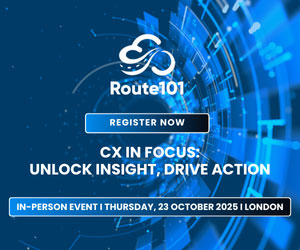Take proactive measures in your contact centre to make sure every client reaches the final stage of the digital customer journey.
It has been here for years and the pandemic gave it a boost—there’s no turning back from online shopping. From financial products to clothes, the number of digital buyers is climbing every year. Now, your business is competing not only with local companies but worldwide.
To beat up the competition, you must provide a smooth digital customer journey—and that’s where the contact centre comes in.
The digital customer journey refers to the path a customer takes from the awareness moment to the purchase (or subscription) stage and covers every online interaction with your company. It’s not very different from the physical experience, yet there are a few things to keep in mind to deliver a seamless experience, from start to finish.
In this blog, we explore:
- The different stages of a digital customer journey.
- The role of the contact centre in the digital customer journey.
- How to optimize the digital customer journey by adding 3 crucial features to your contact centre.
- A few resources to better understand cloud-based contact centres.
The Stages of a Digital Customer Journey
Customers’ digital paths may vary according to the product/service and the industry. However, there are three essential buying stages that cover almost every customer journey:
1. Awareness: Who Are You and What Do You Do?
The awareness or discovery phase is when your prospect realizes there’s something they need. Let’s say they need a new pair of running shoes. What will they do? They’ll turn to the internet and do some research.
At this phase, you need to gain their confidence and answer their questions. Who are you? What are your company values? Are your running shoes capable of resisting the wet Alabama weather?
2. Consideration: I Might Want to Buy From These Guys
Once the potential customer identifies the potential solutions, they’ll start looking for the best possible option. This may include comparing the characteristics, reading other customer reviews, and watching product videos.
Your potential customer will probably check your website for the best deal, evaluate competitors’ prices and product characteristics, and search for online reviews before making a decision.
3. Decision: Ok, That’s Definitely a Yes
This is the final stage. The customer got through all the available options and knows exactly which product to choose. It’s time to make the sale! Note that by this time, some customers will shop online, and others may close the sale at a physical store.
Whether online or on-site, you should focus on delivering the best possible experience from the first moment. Your customers are no longer focused on your products or services—they want to know what you represent and what kind of customer service you offer.
So what is the role of the contact centre in the digital customer journey?
Contact Centres Are Growth Centres
Contact centres don’t just solve customer problems—they are potential growth centres. 84% of companies that work to improve their customer experience report an increase in their revenue.
This means the contact centre serves as the primary interaction point during critical moments of the customer journey, yet is often marginalized and ignored by the rest of the business.
A shift in the strategy is necessary to transform contact centres into growth centres, capable of building and retaining customer relationships and acting as the missing link to the entire digital customer journey.
When integrated with a proactive strategy, contact centres can identify and address potential obstacles, uncover opportunities for revenue growth, and connect all the digital dots to ensure a positive experience for every customer.
A recent study about the future of the contact centre shows that more than a third of businesses believe that automation and AI customer-facing tools will be the preference for simple to moderate support issues, while the more complex transactions will continue to require an agent.
However, you’ll have some customers who will still want (or need) to pick up a phone and talk to a human.
Especially when you’re talking about specific industries and potentially life-changing transactions, such as taking out a new insurance policy or mortgage, customers are more likely to discuss it with a human representative in the consideration phase.
Contact centres need to tie together information all along the customer journey—making sure that, no matter the customers’ preferred channel, the contact centre has access to all the information and interaction history to provide better support and create growth opportunities.
3 Contact Centre Capabilities to Improve the Digital Customer Journey
When the customer experiences a fragmented digital journey, it jeopardizes your company’s reputation and brand engagement. Regardless of where the customer begins their journey, they should have the same level of service.
Customers don’t think about channels, they just want a great experience. To create a truly unified experience that connects the digital journey with the on-site shopping experience and post-sale customer service, you need to add a set of features to your contact centre:
24/7, Inclusive Customer Service
No need to have a huge team of agents on hand to deliver 24/7 service. Avoid missed chats or abandoned calls and provide your customers with a two-way natural dialogue on voice and digital chat channels. Make customer service more inclusive, adding multiple language support.
Contextual, AI-Powered Recommendations
AI empowers contact centre agents to get better results, faster—by automating repetitive tasks. With automated assistance, contextual recommendations, and next best actions during live calls or chat interactions, your agents don’t only increase first call resolution rate, but also create upsell/cross-sell opportunities.
Cross-Functional Communication and Collaboration
Customers don’t care about channels, they care about experiences. Your customer should receive the same experience whether shopping online, at a store, or reaching out to customer service through email or phone.
For that, you need to bridge the gap between clients, sales, and the back office with integrated communication tools across all channels.
This blog post has been re-published by kind permission of Talkdesk – View the Original Article
For more information about Talkdesk - visit the Talkdesk Website
Call Centre Helper is not responsible for the content of these guest blog posts. The opinions expressed in this article are those of the author, and do not necessarily reflect those of Call Centre Helper.
Author: Talkdesk
Published On: 25th Mar 2022 - Last modified: 29th Mar 2022
Read more about - Guest Blogs, Talkdesk






 Talkdesk is a global customer experience leader for customer-obsessed companies. Our contact center solution provides a better way for businesses and customers to engage with one another.
Talkdesk is a global customer experience leader for customer-obsessed companies. Our contact center solution provides a better way for businesses and customers to engage with one another. 

































